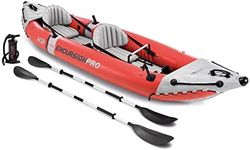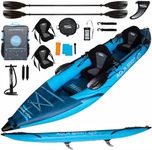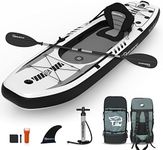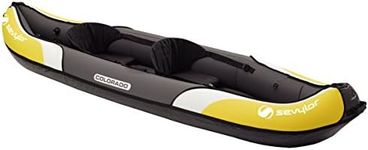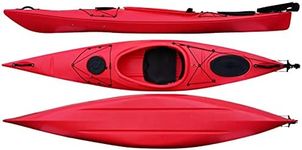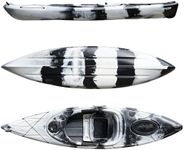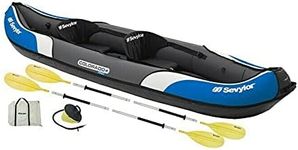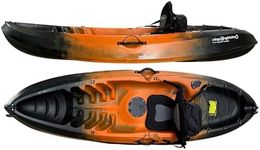Buying Guide for the Best Kayaks
Choosing the right kayak can greatly enhance your paddling experience, whether you're a beginner or an experienced kayaker. The key to finding the best kayak for you is to consider where and how you plan to use it, your skill level, and your physical attributes. By understanding the different specifications and features of kayaks, you can make an informed decision that suits your needs and preferences.Type of KayakKayaks come in various types, including recreational, touring, whitewater, and fishing kayaks. The type of kayak you choose should align with your intended use. Recreational kayaks are great for calm waters and short trips, touring kayaks are designed for longer distances and open waters, whitewater kayaks are built for navigating rapids, and fishing kayaks come with features tailored for anglers. Consider where you'll be kayaking most often to determine the best type for you.
LengthThe length of a kayak affects its speed, stability, and maneuverability. Longer kayaks (12 feet and above) are generally faster and track better, making them suitable for open water and long-distance paddling. Shorter kayaks (under 12 feet) are more maneuverable and easier to transport, ideal for rivers and small lakes. If you're a beginner or plan to paddle in tight spaces, a shorter kayak might be more suitable. For experienced paddlers or those looking to cover more distance, a longer kayak could be a better fit.
WidthThe width of a kayak influences its stability and speed. Wider kayaks (over 30 inches) offer more stability, making them a good choice for beginners or those who prioritize stability over speed. Narrower kayaks (under 30 inches) are faster and more efficient in the water but can be less stable, which might be better suited for experienced paddlers. Consider your balance and comfort level when choosing the width of your kayak.
Weight CapacityWeight capacity refers to the maximum weight a kayak can safely carry, including the paddler and any gear. It's important to choose a kayak with a weight capacity that exceeds your body weight plus the weight of your gear to ensure safety and performance. If you plan to carry a lot of gear or go on multi-day trips, opt for a kayak with a higher weight capacity. For day trips or light paddling, a lower weight capacity may suffice.
MaterialKayaks are made from various materials, including plastic, fiberglass, and composite materials. Plastic kayaks are durable and affordable, making them a popular choice for beginners and recreational use. Fiberglass kayaks are lighter and offer better performance but can be more expensive and less durable. Composite kayaks, made from materials like carbon fiber, are the lightest and most efficient but also the most costly. Consider your budget, how often you'll use the kayak, and the type of water you'll be paddling in when choosing the material.
Cockpit SizeThe size of the cockpit affects your comfort and ease of entry and exit. Larger cockpits provide more room and are easier to get in and out of, which is beneficial for beginners or those who prefer a more relaxed paddling experience. Smaller cockpits offer better control and protection from the elements, making them suitable for more experienced paddlers or those kayaking in rougher conditions. Think about your comfort and the conditions you'll be paddling in when selecting the cockpit size.
Storage OptionsStorage options in a kayak include hatches, bungee cords, and compartments for gear. If you plan to go on longer trips or need to carry a lot of equipment, look for kayaks with ample storage space. Hatches provide dry storage for valuables, while bungee cords can secure larger items on the deck. Consider the type and amount of gear you'll need to bring and choose a kayak with appropriate storage solutions.

